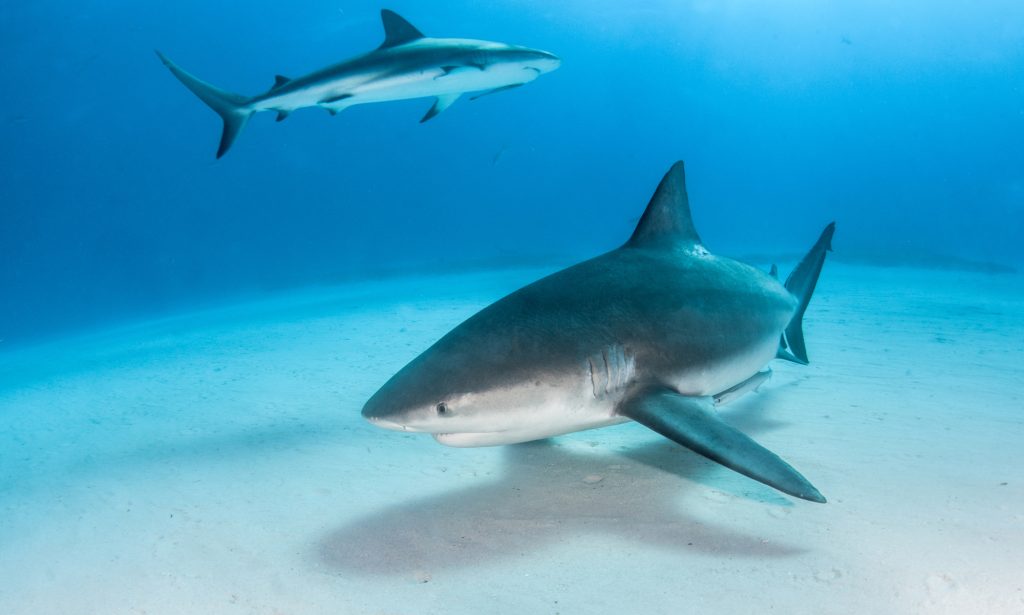Feeding sharks for the benefit of divers is becoming more and more common, but is controversial. New research suggests that feeding in areas with several different sharks, over time, leads to one species increasing in numbers at the expense of the others. Published in PLOS ONE(1), the study looked at the Shark Reef Marine Reserve feeding site in Fiji from 2003 to 2012.
Eight species of shark regularly visited the site in 2003: bull shark (Carcharhinus leucas), grey reef shark (Carcharhinus amblyrhynchos), whitetip reef shark (Triaenodon obesus), blacktip reef shark (Carcharhinus melanopterus), tawny nurse shark (Nebrius ferrugineus), silvertip shark (Carcharhinus albimarginatus), sicklefin lemon shark (Negaprion acutidens), and tiger shark (Galeocerdo cuvier). By 2012, there were more individual sharks visiting, but fewer species. The winner was the bull shark. The smaller tawny nurse shark, silvertip shark and sicklefin lemon shark became very rare visitors.
 Image: DepositPhotosImage: DepositPhotos
Image: DepositPhotosImage: DepositPhotosThe larger sharks get more of the food, and so the rewards for the smaller sharks become less. If they are not getting much food from the dives, there is less incentive for the smaller sharks to keep visiting.
Economically, sharks provide much more money through tourism than could be earned by killing and eating them. The pacific island of Palau, for example, receives 8% of its gross domestic product from shark diving.(2)
In spite of the obvious benefit of feeding rather than killing sharks, scientists and conservationists have also highlighted drawbacks. One study indicated that sharks become more aggressive to each other – perhaps because there are so many of them in a small area – and to other species – which might lead to people being bitten more frequently.(3)
When the shark-feeding dives are linked to marine protection projects, then they can contribute to shark conservation. Even better if the shark dive operators also team up with scientists to monitor shark population size and behaviour.
Photo credit: Terry Goss (CC BY 2.5)
Journal References
(1)Brunnschweiler JM, Abrantes KG, Barnett A (2014) Long-Term Changes in Species Composition and Relative Abundances of Sharks at a Provisioning Site. PLoS ONE 9(1): e86682. doi:10.1371/journal.pone.0086682
(2)G.M.S. Vianna, M.G. Meekan, D.J. Pannell, S.P. Marsh, J.J. Meeuwig (2012) Socio-economic value and community benefits from shark-diving tourism in Palau: A sustainable use of reef shark populations. Biological Conservation 145 267–277
(3)Clua E, Buray N, Legendre P, Mourier J, Planes S (2010) Behavioural response of sicklefin lemon sharks Negaprion acutidens to underwater feeding for ecotourism purposes. Mar Ecol Prog Ser 414:257-266
Image credits:
- Bulls shark at the Bahamas: DepositPhotos
